Paving the way for automated vehicles
Autonomous vehicles (AV) have huge potential – but to achieve it they need to be supported by the appropriate physical and digital infrastructure, the right legal and regulatory policies, and robust institutional capacities. Are we ready for the challenge?
Earlier this year, Britain became the first country in Europe to approve a hands-free driving system, with the Government granting permission for the use of Ford’s BlueCruise driver assistance technology on 2,300 miles of highways[1]. Drivers using it will legally be allowed to take their hands off the car’s steering wheel and feet off the pedals – though they will have to keep their attention on the road.
The use of automated, or autonomous, vehicles (AVs) is growing elsewhere, too. BlueCruise is already being used by about 200,000 drivers in Canada and the US[2]. In the latter country, the impact of ongoing progress in automation is increasingly clear, with driverless taxis an established sight on the streets of cities including San Francisco and Phoenix.
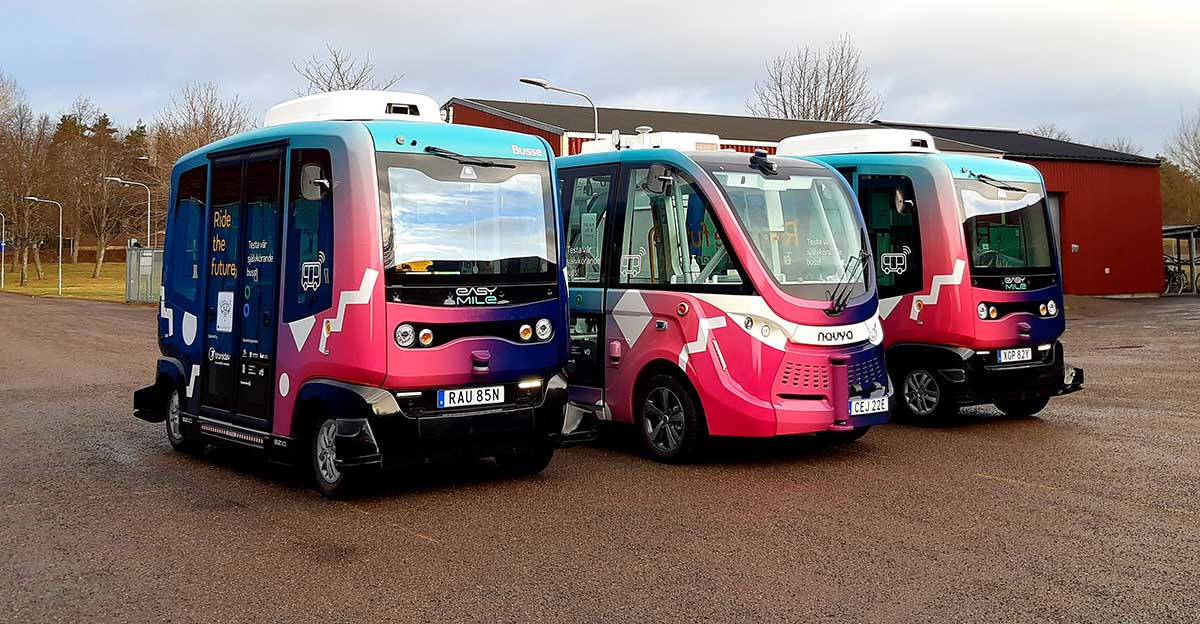
Other kinds of AVs are becoming a reality, too, albeit usually with human safety drivers in place. Three autonomous buses are now operating in Linköping, Sweden[3]. And a recent trial in the US found that using automated trucks led to utilization rates of more than twice that of a typical manual truck controlled by a human driver following mandatory rest break rules.[4]
Automation is expected to have a significant impact in many industries. In mining, for example, Abdul Latif Jameel’s longstanding partner Toyota Motor Corporation recently launched a project with Sumitomo’s Komatsu to develop an autonomous light vehicle intended to improve safety and productivity[5].
But what exactly does it mean for a vehicle to be automated?
As the example of BlueCruise suggests, there are several steps on the journey from traditional driven vehicles to completely autonomous ones. To help make sense of this, automation is usually categorized using a scale with six levels[6], from level 0, where the driver does everything, to level 5, which requires no human involvement at all.
At level 3, the vehicle drives itself some of the time, though the driver must take back control if alerted to by the vehicle. At level 4, the vehicle drives itself all of the time under certain conditions.

Manufacturers are quickly making progress up the levels – Ford BlueCruise represents level 2 automation, while the ‘robotaxis’ taking trips in the US are level 4. A fully driverless world of level 5 vehicles is still some way off, but there is rapid progress lower down the scale. In the European Union (EU), from 2024 all new vehicles must include systems for emergency braking and keeping in-lane – effectively making it impossible to buy a new car after this date without level 1 automation.
According to McKinsey, there is enormous potential for growth in the market for vehicles with higher levels of automation. Analysis by the consultancy this year[7] forecasts a base scenario where by 2030, 12% of new passenger cars are sold with autonomous driving (AD) technologies at level 3 or higher, with that figure reaching 37% in 2035. But researchers stress there remain high levels of uncertainty, with factors such as technology availability and customer adoption influencing future trends.
Under an ‘accelerated’ scenario, McKinsey forecasts that more than half (57%) of passenger cars sold in 2035 will include advanced AD technologies – but in its ‘delayed’ forecast, this proportion would only be 17%.

Physical infrastructure
If AVs become widespread, it will have massive implications for how the roads they travel on are designed and built. A 2021 research paper called ‘Future Streets’ from the University of Michigan’s Center for Transportation Studies, for example[8], compares the current move towards AVs to the transition from horse-drawn transportation to cars in the early twentieth century – a transformation that changed the nature of the roads themselves.
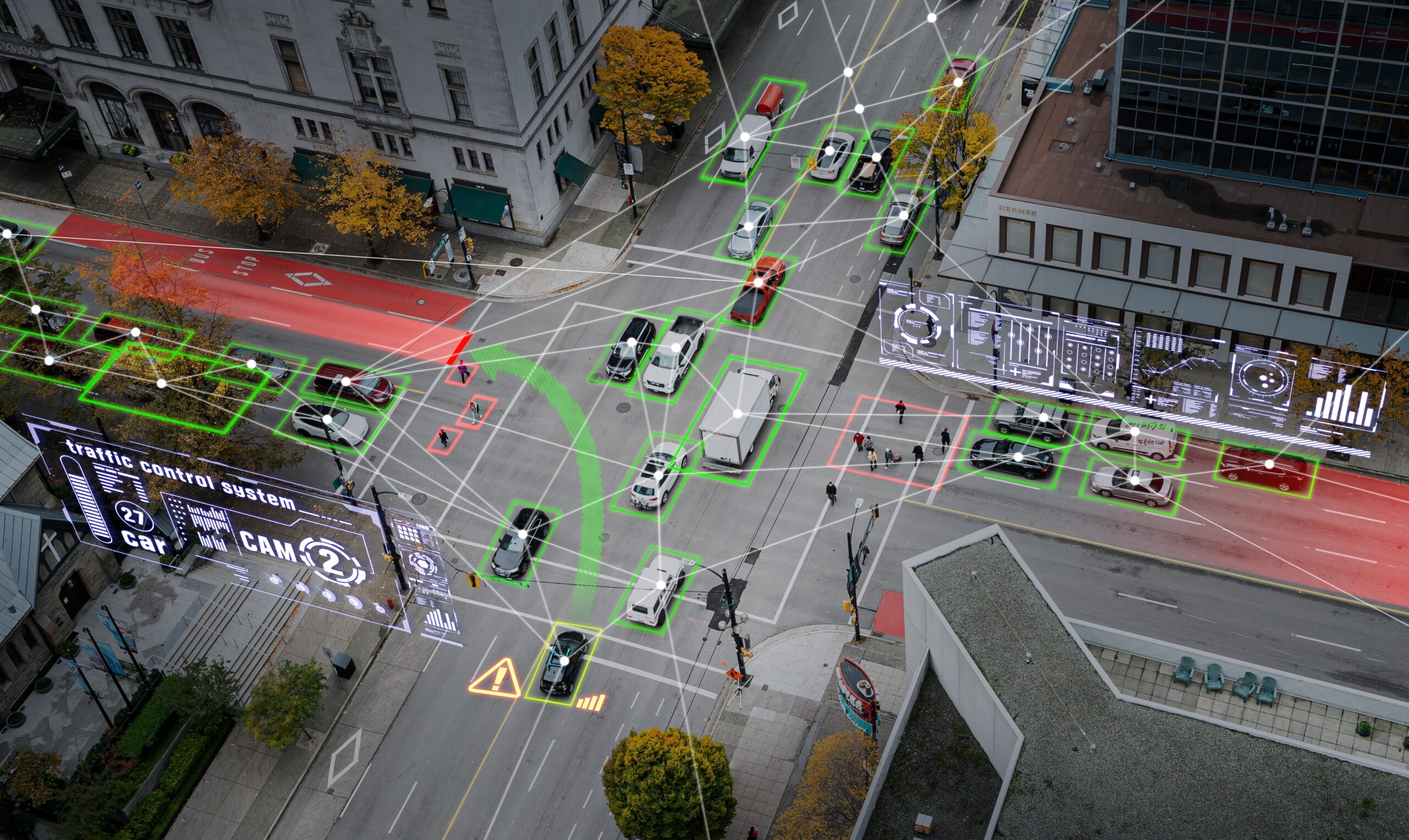
Moving to AVs will involve an equally dramatic change in our roadway infrastructure. Perhaps one we don’t usually think about is that as the movement of autonomous vehicles is more precise and consistent than human driving, they tend to quickly create ruts in soft materials like gravel or asphalt, says the Future Streets report. It therefore predicts that to support AVs, roads in future will need to include wear-resistant, reinforced concrete tracks within an otherwise pervious surface that allows rainwater to drain through.
It’s not only the roads that would be impacted, but also the accompanying systems to direct traffic on them, such as traffic lights, road markings and signs.
A McKinsey report from 2019[9] suggests that in future, cities may replace much of this signage with a digital transportation-management system that feeds key information, such as speed limits and turning restrictions, directly to vehicles.
Such visions are exciting, but many believe it is likely to be some time before they become reality.
 The International Transport Forum (ITF), an intergovernmental organization with 64 member countries, produced a report in 2023 looking at the infrastructure requirements of AVs[10], based on discussions from an international working group.
The International Transport Forum (ITF), an intergovernmental organization with 64 member countries, produced a report in 2023 looking at the infrastructure requirements of AVs[10], based on discussions from an international working group.
The document says that previous optimism about the pace of change towards driverless cars has cooled and the arrival of fully autonomous level 5 vehicles “now appears many decades away”. Given this, “there are currently no calls from industry or developers to create special-purpose infrastructure solely for the use of AVs,” says the ITF report. “Their intention is to create vehicles capable of working on the existing physical road network.”
That’s not to say that nothing can be done to support better physical infrastructure for AVs. The ITF report says the maintenance of surfaces, traffic signs and markings can support safer AV use. It refers to a local trial where an automated shuttle bus was confused by [a] bus stop next to a roundabout. The vehicle was not able to interpret the road markings from the two features together, meaning it could not stop there until the markings were improved.
The report concludes that road markings could become significantly more important to safety as AVs enter use, and if so would need to be considered more as part of maintenance planning. But uncertainty about the exact needs of AVs means there is not yet an example of best practice that other countries can look to emulate. In general, maintenance is likely to become a rising priority as AVs become more widespread, the report predicts.
Digital infrastructure
Clearly, it’s currently very important for AVs to be able to interact with physical road signs and markings. But there is also huge potential for them to communicate entirely in the digital sphere. Instead of ‘reading’ a physical sign, for example, a vehicle that’s connected to the internet could receive information from roadside sensors, other vehicles, or an overarching traffic management system to help it move around safely and efficiently. Equally, it could transmit information on road, weather and traffic conditions to help other road users do the same.
So, while entirely digital traffic management systems may still be some way off, it’s expected that connectivity will be increasingly important to AVs. This means supporting their development will not just be about physical but also digital infrastructure – the range of systems, structures and devices needed to enable digital communication. The ITF’s report says that digital infrastructure may include wired and wireless communications networks, systems for data collection and storage, and access to information services to support positioning, navigation and timing.
Some digital infrastructure developments are already fairly advanced. Cooperative Intelligent Transport Systems (C-ITS), for example, may be used to give vehicles early warnings of traffic jams, roadworks, or accidents ahead.

These already being adopted in a number of places. In Korea, for example, Seoul’s metropolitan government is developing a 5G-connected C-ITS as part of its wider TOPIS (Transport Operation and Information Service)[11] project. The authority is installing C-ITS infrastructure on 121km of major roads in the city, to support real-time communication between vehicles, pedestrians and infrastructure.
The technology is being piloted in a dedicated area in the Sangam-dong neighborhood, and advanced driver assistance systems have been installed on buses and taxis. The system allows vehicles to share information on road conditions, such as potholes, with the management centre and other vehicles as they drive. Seoul’s government says the approach can help prevent accidents by directing vehicles to change routes or lanes if necessary.
Elsewhere, a project in Australia is using C-ITS roadside units to broadcast information from traffic lights to users of the 1,500km-long Bruce Highway in Queensland, providing warnings of red lights and pedestrian presence[12]. The State’s Minister for Transport & Main Roads, Mark Bailey, said the system “is expected to reduce crashes by 20%”.
Similarly, a pilot in Portugal found C-ITS technology could be used to alert vehicles to dangers, hazards and delays associated with access to the 1,620m-long Gardunha tunnel. Jorge Ribeiro, the chief executive of the Allbesmart technology company involved in the trial, said the project “proved our ability to deliver accurate and timely warning messages to drivers approaching the tunnel, even allowing them to exit the road at the next junction, if required”[13].
Most current C-ITS systems are based on communications between vehicles and road infrastructure, but some initiatives are also exploring the possibility of more sophisticated systems where AVs communicate with each other and other road users as well. An Australian study from 2020 involving the University of Melbourne[14] concluded that eight different C-ITS approaches – involving communication between vehicles, infrastructure and other road users – had the potential to reduce crashes by up to 78%.
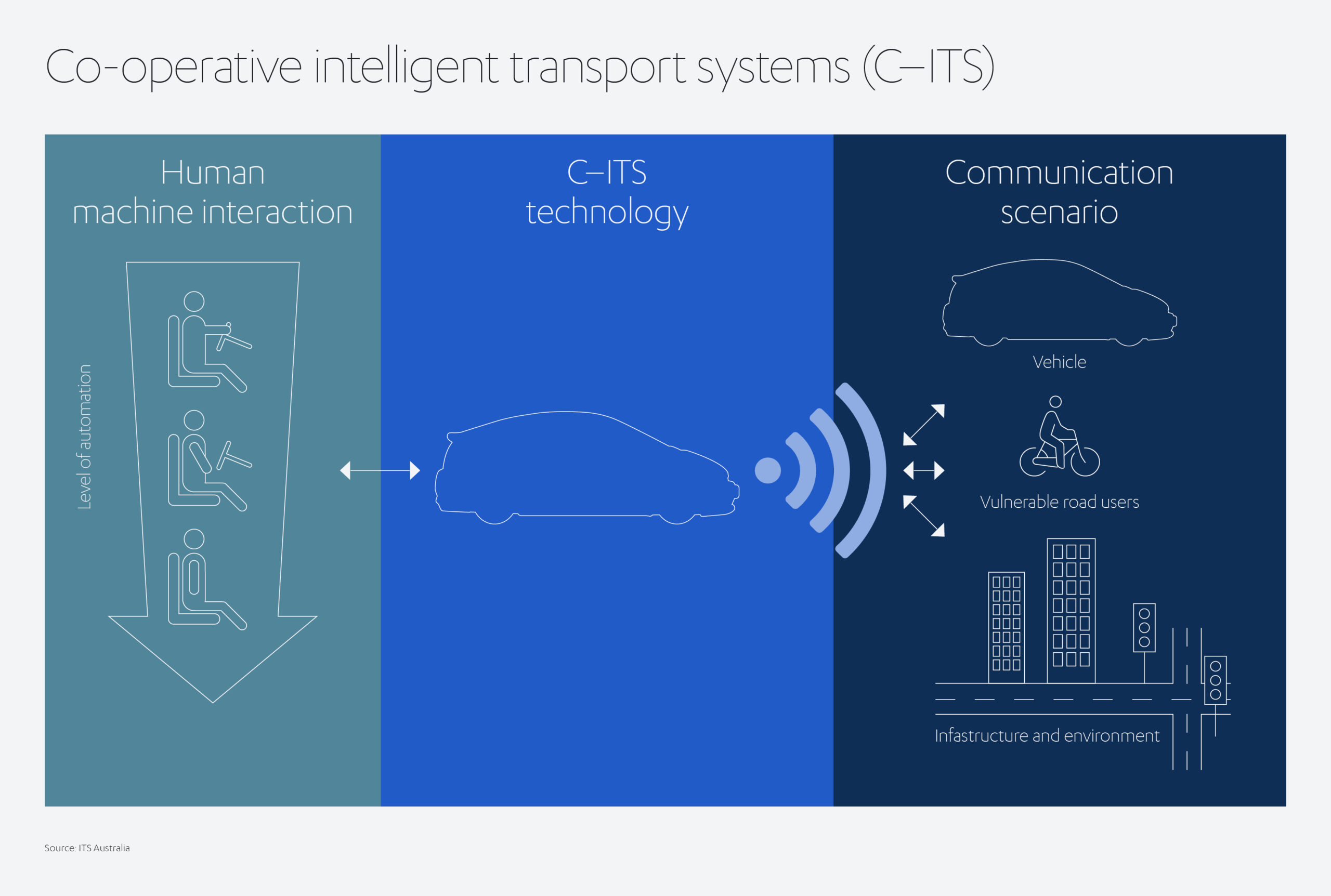
If the use of such approaches becomes widespread, it’s likely that better connectivity will be needed to support them.
The ITF predicts[15] that automated transport will contribute to new requirements for mobile communication networks along main roads – and that in future this is likely to involve 5G, the latest generation of mobile connectivity which offers higher speeds and lower latencies. Many early applications of automation can work with existing 4G networks, but as technology and services develop, the need for 5G technology and its capabilities quickly becomes overwhelming, the report says.
Another aspect of digital infrastructure that is vital for AVs is data, such as high definition (HD) maps. These contain various layers of historic and real-time information to provide a 3D representation of a vehicle’s environment – accurate to within centimeters – and are seen as essential for the safe operation of [connected and automated vehicles][16]. AVs use these maps to navigate, so a high level of detail is important – and they need to be updated frequently. Maps, potentially more than any other kind of data, represent a key new ‘infrastructure’ for AVs, with many developers considering them to be critical to safe operation[17]. But due to their complexity and data-intensity, processing them requires considerable onboard computing power.
Clearly, developing infrastructures that can supply AVs with the data and connectivity they need to operate will be important in numerous ways – and will become ever more so as the vehicles’ capacities and usage develop. Some experts believe connectivity will be as important to AVs as gasoline is for traditional vehicles.
Policy and institutions
When we consider the practicalities of introducing AVs to the roads safely, it quickly becomes clear that this will also require significant changes at an institutional and policy level. Given the radical differences between AVs and traditional human-driven vehicles, for example, they require extensive testing. This includes both experimental testing by manufacturers during product development, and formal validation testing by authorities to officially approve vehicles for use.
Safety testing for traditional vehicles focuses on making sure mechanisms like steering and brakes comply with relevant standards. But with AVs, the emphasis is different. The replacement of human sensing and cognition functions with machine intelligence creates what the ITF describes as a “complex software-intensive system”. And this is in many ways much more complicated to assess.
 Edward Griffor, an associate director at the US National Institute of Standards and Technology (NIST) believes:
Edward Griffor, an associate director at the US National Institute of Standards and Technology (NIST) believes:
“There’s a lot we don’t really know” about how to automate driving, measure driving performance, and make sure automated vehicles drive safely[18].
The NIST has therefore been working with the AV industry and other stakeholders towards a consensus on the metrics needed to evaluate safety, and how to measure these. These conversations have led to it developing the concept of an Operating Envelope Specification (OES) that sets out a vehicle’s capacities and capabilities. This includes the conditions it can operate in (such as rainfall and snow) as well behaviors it can carry out (such as lane changing and navigating intersections). The idea is that researchers, developers, and regulators can then use this framework to create testing scenarios. “Think of the OES as the job description and associated metrics that all autonomous vehicles should meet,” explains Griffor.
The NIST has also worked with developers to create a “co-simulation platform” for studying AV safety, bringing together leading simulations for factors including sensors, braking and engines. This can be used to assess different aspects of safety and vehicle models at the same time, to address issues such as avoiding collisions, obeying speed limits and overtaking. Even so, Griffor admits there are aspects of AV safety testing that remain unsolved. For instance, while human drivers can be tested for competence and given licenses, the most significant challenge for AV, he says, is that we don’t yet know how to test a software driver – the system responsible for driving the car.
Conversations with the AV community have highlighted a need for further research into issues such as interactions between systems and the vehicle, recognizing and responding to objects, and the risks associated with AI. Another safety issue relates to cyber security, where it is widely understood that the increasing use of connectivity for AVs increases risks. The CSA standards organization says initial research “has uncovered a broad range of physical and remote attack surfaces that malicious agents can exploit”, and that AVs will become further exposed as the industry moves towards level five automation.[19]
Partners in AV mobility
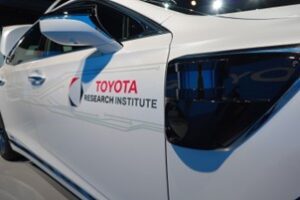
Abdul Latif Jameel’s long-standing automotive partner, Toyota Motor Corporation, is developing a two-pronged approach to AV technology.
Its ‘Guardian’ active safety platform aims to “safely blend vehicle control between the driver and an AI system, sharing roles to take the best advantage of their skills[1],” a system it calls ‘blended envelope control.’
Its second approach is called ‘Chauffeur’, a full AV technology that will allow a vehicle to operate on its own without human oversight or fallback responsibility, similar to SAE Levels 4 and 5.
It is initially aimed at those “who cannot or choose not to drive because of age, infirmity, or any other reason”.[1]
 Through its Toyota Ventures early-stage venture capital firm, Toyota is also funding state-of-the-art research into the kind of interconnected systems which will help shape the future of AV technology.
Through its Toyota Ventures early-stage venture capital firm, Toyota is also funding state-of-the-art research into the kind of interconnected systems which will help shape the future of AV technology.
Apex.AI, for instance, develops safety-certified base software to enable a faster transition to software-defined vehicles and software-defined mobility.
Electric vehicle disruptor RIVIAN, in which the Jameel Family was a major early investor, is likewise positioning itself at the forefront of AV technology.
It is developing an AI charging system that could help its batteries last up to three times longer than traditional alternatives.
Its software-enriched vehicles come with multiple pre-installed systems that can be updated in the same way as cellphone apps, governing vital connectivity features such as driver monitoring, telematics, thermal management and hands-free driver assistance.
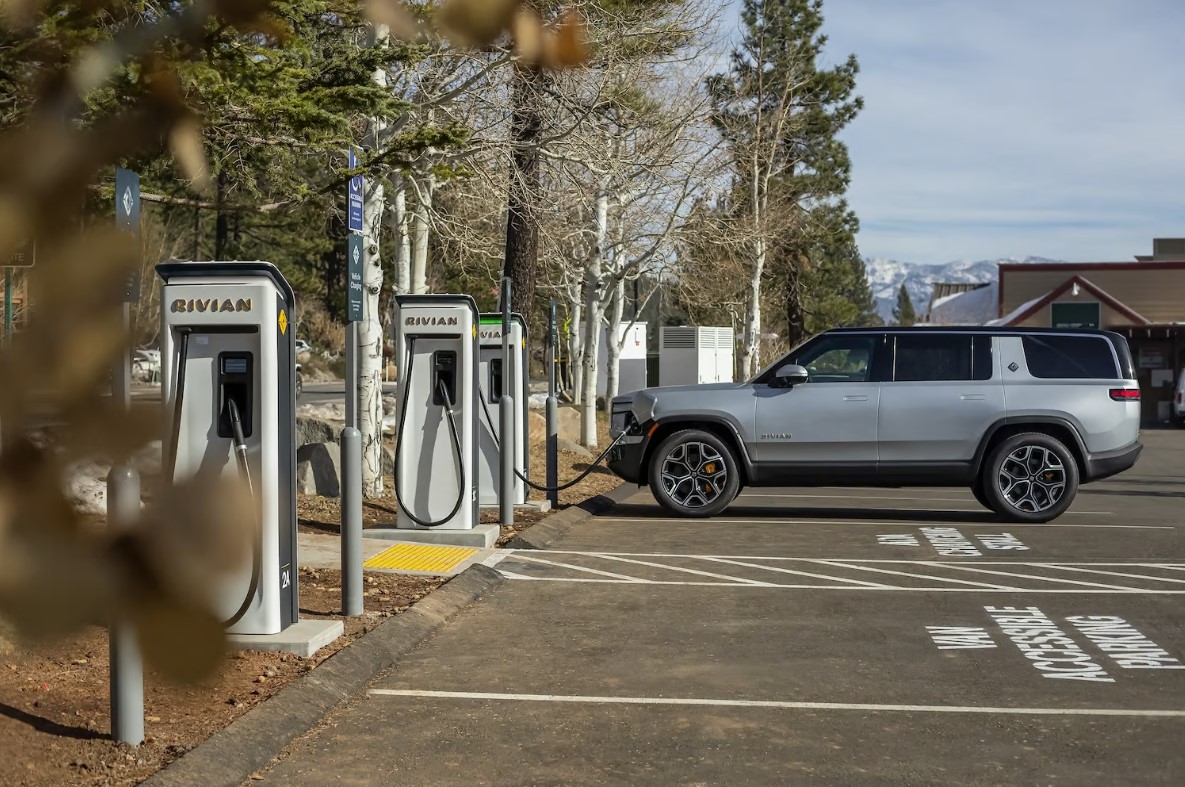
Pioneering the future
Even at this relatively early stage, then, it’s clear that adopting AVs safely is not simply a matter of bringing in a few new rules or tests. It will involve fundamental changes at a structural level – in approaches and norms, as well as in regulations, policy, laws, and the institutional structures that support these.
One country seen as a global leader in this regard is Finland. KPMG’s Autonomous Vehicles Readiness Index 2020[20], which assesses countries’ preparedness for AVs using a range of criteria, awarded Finland the maximum score for AV regulations that support AV use and testing (along with Australia, the Netherlands and Singapore). The report says regulators in Finland are agile and legislation makes it possible to carry out versatile autonomous tests with different forms of transport, with test permits able to be obtained effortlessly, and with easy interaction with the authorities.
The ITF report also cites Finland as a global leader in this area. It highlights how the country has created a single point of contact at its approval authority for obtaining testing permission, and evaluates testing plans through interactive discussions, requesting information on aspects such as the test area, safety and security, and technical information.
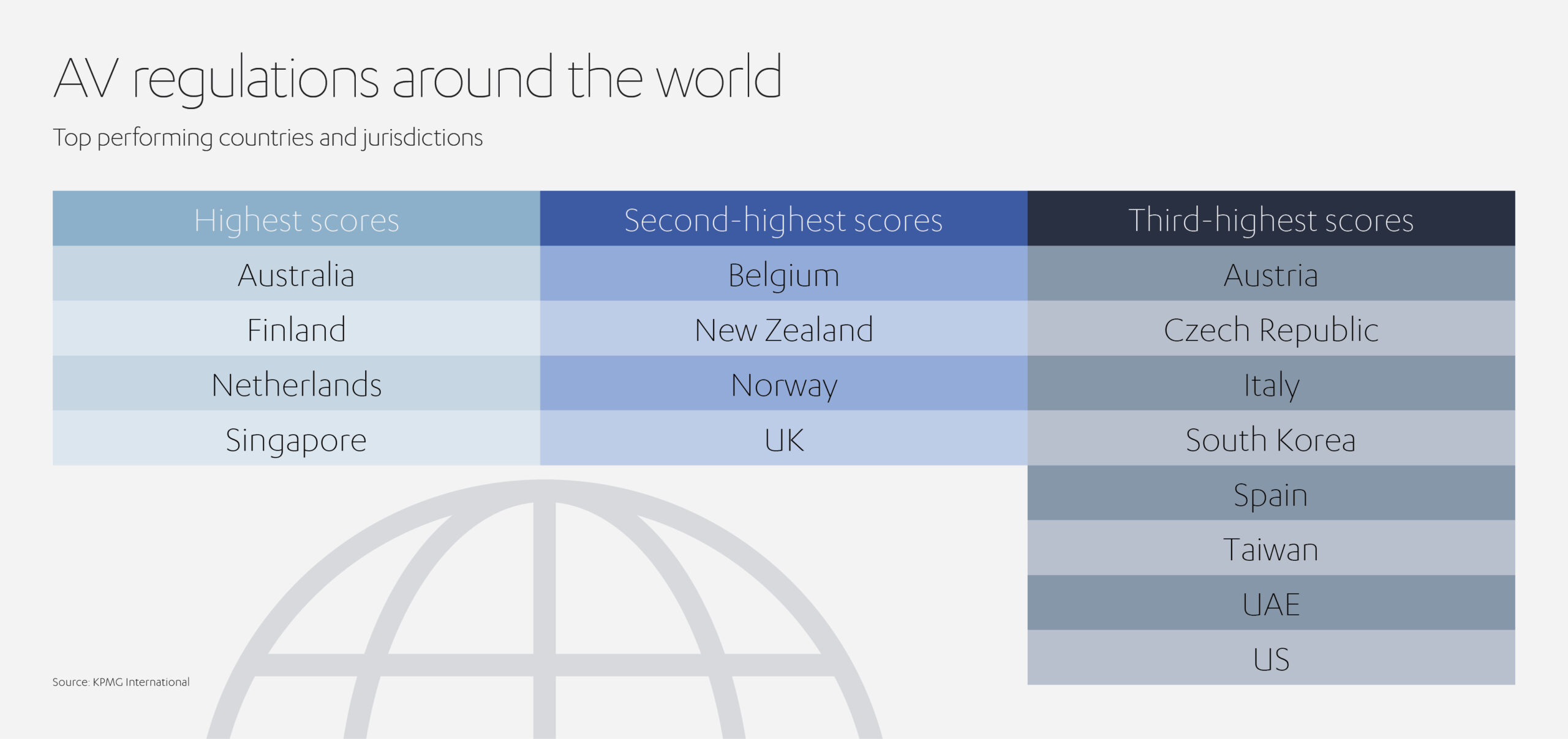
Finland’s preparedness for AVs is no accident. According to KPMG experts, the country has done a lot of work to ready itself, including opening its roads for trials and developing a Road Traffic Act which came into force in June 2020 – and lobbying for changes in relevant EU legislation. “Legally, the building blocks were put in place quite some time ago,” comments Henk-Jan Kruit, KPMG’s global strategy group manager in Finland.
Collaboration is key
It is unlikely that governments will be able to negotiate the wide range of policy issues that AVs bring up, with the support of the variety of stakeholders they involve, without co-ordination and strategic direction.
Some countries are seeking to provide this through dedicated bodies, such as the UK’s Centre for Connected and Autonomous Vehicles (CCAV)[21].
This policy unit, a joint initiative between the country’s business and transport departments, has overseen activity such as mobilizing £450m of public and private investment, developing a code of practice for testing and enacting new primary legislation, as well as securing engagement from local and regional authorities[22]. CCAV also tasked the UK law commissions to review the legal framework for AVs. The resulting report, published in 2023[23], includes recommendations on issues such as approval and authorization, monitoring of performance, marketing, and criminal and civil liability.
Similar co-ordination and co-operation will also be crucial at an international level. Bringing together international experience in standardized procedures for testing and crash investigations, for instance, could help introduce AVs across jurisdictions faster.
Another issue is the lack of a consensus on preferred connectivity methods, which makes it harder to justify immediate investment. Global work towards agreed standards would increase policy makers’ confidence about where to invest and help developers find solutions with a wide application. The ITF also suggests that AV operations in different areas could be assisted by developing a customizable “blueprint” to avoid the need to invent new arrangements in every city.
“Many of the uncertainties about how and where AVs can operate are best approached through a global collaboration between industry and policy makers, working together to explain uncertainties and develop a standard approach that can encourage innovation and protect the public,” says the ITF in its report.[24]
An encouraging example of such international collaboration exists in the C-Roads project[25] , which brings together EU member states and road operators to work on the harmonized deployment of C-ITS systems. Another is the United Nations’ World Forum for Harmonization of Vehicle Regulations, which is developing a global regulatory framework for AVs, including recently raising the maximum automated speed limit to 130 kilometers per hour[26]. If they can show the ambition and courage needed to build on such initiatives, governments and industry across the globe will be well-placed well to harness AVs’ considerable potential.

Deputy Chairman and Vice President,
Abdul Latif Jameel
“AV technologies can provide a faster, safer and more convenient mobility solution for our society.
As our cities become ‘smarter’ and more technologically-enabled, AVs can reduce congestion, improve safety for both passengers and other road users, and deliver a more engaging, pleasurable driving experience.
Crucially, they can also contribute to the creation of greener, more livable urban communities and more efficient economies, playing an important role in our journey towards net zero,” says Fady Jameel, Deputy President and Vice Chairman, Abdul Latif Jameel.
[1] https://news.sky.com/story/self-driving-ford-car-granted-approval-for-hands-free-use-on-british-motorways-in-european-first-12856889
[2] https://techmonitor.ai/technology/ai-and-automation/autonomous-vehicles-uk-motorways-department-for-transport-ford-bluecruise
[3] https://linkopingsciencepark.se/linkoping-gets-its-third-autonomous-vehicle/
[4] https://www.bcg.com/publications/2022/mapping-the-future-of-autonomous-trucks
[5] https://global.toyota/en/newsroom/corporate/39205159.html
[6] https://www.sae.org/blog/sae-j3016-update
[7] https://www.mckinsey.com/industries/automotive-and-assembly/our-insights/autonomous-drivings-future-convenient-and-connected
[8] https://www.cts.umn.edu/publications/report/future-streets-leveraging-autonomous-shared-vehicles-for-greater-community-health-equity-livability-and-prosperity
[9] https://www.mckinsey.com/industries/travel-logistics-and-infrastructure/our-insights/a-new-look-at-autonomous-vehicle-infrastructure
[10] https://www.itf-oecd.org/preparing-infrastructure-automated-vehicles
[11] https://topis.seoul.go.kr/openEngCits.do
[12] https://cms.its-australia.com.au/assets/images/PDFs/Connectivity-in-C-ITS-White-Paper_FINAL_web.pdf
[13] https://www.traffictechnologytoday.com/news/incident-detection/portuguese-smart-tunnel-trial-paves-the-way-for-c-its-system-rollout.html
[14] https://www.traffictechnologytoday.com/news/connected-vehicles-infrastructure/white-paper-australian-research-reveals-connected-talking-cars-could-save-lives.html
[15] https://www.itf-oecd.org/preparing-infrastructure-automated-vehicles
[16] https://www.csagroup.org/wp-content/uploads/CSA-Group-Research-Physical-and-Digital-Infrastructure-for-Connected-and-Automated-Vehicles-_CAV_.pdf
[17] https://www.itf-oecd.org/preparing-infrastructure-automated-vehicles
[18] https://www.nist.gov/blogs/taking-measure/cruising-toward-self-driving-cars-standards-and-testing-will-help-keep
[19] https://www.csagroup.org/wp-content/uploads/CSA-Group-Research-Physical-and-Digital-Infrastructure-for-Connected-and-Automated-Vehicles-_CAV_.pdf
[20] https://kpmg.com/xx/en/home/insights/2020/06/autonomous-vehicles-readiness-index.html
[21] https://www.gov.uk/government/organisations/centre-for-connected-and-autonomous-vehicles
[22] https://www.itf-oecd.org/preparing-infrastructure-automated-vehicles
[23] https://www.lawcom.gov.uk/project/automated-vehicles/
[24] https://www.itf-oecd.org/preparing-infrastructure-automated-vehicles
[25] https://www.c-roads.eu/platform.html
[26] https://unece.org/media/transport/Road-Safety/press/368227





 1x
1x

 Added to press kit
Added to press kit


